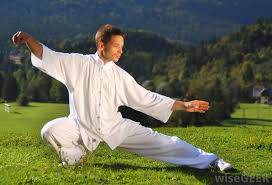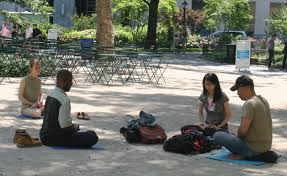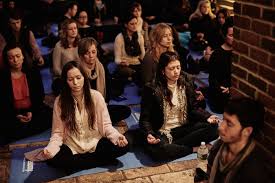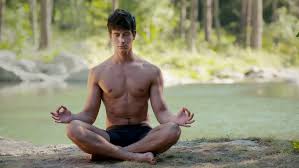NEW
DELHI—
The bank executive, the book publisher and the social worker
had one thing in common: Their hectic lives in the crowded Indian capital had
become so chaotic and stressful, they've turned to chanting Buddhist mantras in
search of calm.

The practice is catching on among India's well-off urban professionals, growing
by word of mouth as a way to relieve stress. Most of those picking up the
practice are Hindu, but they say they see no conflict between their religious
beliefs and the chanting. Some say it is soothing, others invigorating.

"I feel it just makes me a better human being, more humane,'' says Gaurav
Saboo, 34, a devout Hindu working at an international bank in New Delhi.
"It enables me to understand the suffering of others and reach out to
others.'' Buddhism, he says, "is a philosophy, a way of life,'' and the chanting has
brought a positive energy into his life. While Buddhism began on the Indian subcontinent around the 5th century BC, it
has waned in both India and Nepal while flourishing in different forms in
Japan, Thailand, Sri Lanka, Cambodia and other countries. With its easy rituals
and lack of dogma, Buddhism has long drawn supporters from afar. Hollywood
celebrities, agnostics, Christians and Jews alike attend Buddhist spiritual
retreats.

Archi Sharma, a housewife who took up chanting a year ago, says she was "searching for some meaning'' in her life when she heard about Buddhist chanting from friends."I felt there was a vacuum in my life,'' Sharma said. "The chanting has helped. It stops you thinking about me, myself. It makes one think of others first.''
Sharma, who chants twice a day between household chores and taking care of an ailing relative, said she saw no conflict between her family's traditional Hindu beliefs and her chanting.

Archi Sharma, a housewife who took up chanting a year ago, says she was "searching for some meaning'' in her life when she heard about Buddhist chanting from friends."I felt there was a vacuum in my life,'' Sharma said. "The chanting has helped. It stops you thinking about me, myself. It makes one think of others first.''
Sharma, who chants twice a day between household chores and taking care of an ailing relative, said she saw no conflict between her family's traditional Hindu beliefs and her chanting.
"The chanting is not invasive and runs parallel to what we practice as
Hindus,'' she said. "It opens a doorway to another stream of happiness
into one's life.'' The practice of repeating a mantra is not exclusive to Buddhism. Many across
Hindu-dominated India also include chanting as part of their yoga, and some
Christian groups repeat chants. While Hindu chanting is often associated with religious rituals, Buddhist
chanting is seen as less dogmatic, aimed at calming the nerves or feeling a
sense of well being, said New Delhi-based sociologist Abhilasha Kumari.

"Hindu chanting is linked to religious ritual,'' she said. "Buddhist
chanting is a free space where you chant and are not tied down to other aspects
of religiosity.'' Many Indians who have picked up chanting have been drawn to sessions organized
by Soka Gakkai International, the lay organization of a major Nichiren Buddhist
sect whose stronghold is in Japan. The group traces its roots to the chants and
teachings of a 13th century Japanese monk named Nichiren.

The group has not been engaged in an active campaign to promote chanting in
India, although it claims to have introduced the practice to around 100,000
Indians since setting up in the country in 1986, according to the group's
office in New Delhi.
Practitioners chant individually but many meet monthly. Many say that that apart from easing their own stress, the chanting also makes them understand people around them and working for the happiness of others.

At a recent gathering in a middle class New Delhi neighborhood, participants shucked off their shoes and quietly sat down on thin mattresses in the basement of an apartment building. They faced an ornate wooden altar holding a scroll on which the words they will chant for the next hour are written: "Nam-Myoho-Renge-Kyo,'' which refers to the law of cause and effect.

Practitioners chant individually but many meet monthly. Many say that that apart from easing their own stress, the chanting also makes them understand people around them and working for the happiness of others.
At a recent gathering in a middle class New Delhi neighborhood, participants shucked off their shoes and quietly sat down on thin mattresses in the basement of an apartment building. They faced an ornate wooden altar holding a scroll on which the words they will chant for the next hour are written: "Nam-Myoho-Renge-Kyo,'' which refers to the law of cause and effect.
Latecomers seamlessly joined in, blending their chant with the ongoing rhythm.
Soon the incantation picked up speed, building to a crescendo and then slowing
again while the chanters recovered their breath. Faintly, there was the
clicking of wooden beads that the chanters used to help focus their thoughts on
the mantra. Every now and then, one of them struck a gong.

"You feel invigorated. It's a great feeling,'' said Ruma Roka, 54, at the
end of the chanting session as she and the others moved to another room for
discussions over tea. Roka started chanting about 10 years ago as a housewife,
and has found it helps her cope with the stress of her job teaching the hearing
impaired at the special clinic she runs.

"If I did not chant, if I went back home with all the heaviness of this
very challenging work ... I would not be able to survive,'' Roka said. "I
would have a compassion deficit.''Getting numbers on the recent growth of chanters is difficult, but Indian media
has reported on the trend. Many individuals hear about the chanting sessions by
word of mouth, and are often simply looking for new ways of stress-busting
after trying other traditional methods.

Namrta Bangia, a 32-year-old publishing executive, said she had tried
Pranayama, an ancient Indian breathing practice, and the silent Hindu
meditation of Vipassana before settling on Buddhist chants. Her family and
friends tell her they have noted a change in her. "I've become more positive, more confident, more cheerful,'' she said
after a recent group session. "I'm a different person. I am not going to
get defeated.''
0 comments:
Post a Comment
Please insert your comments here